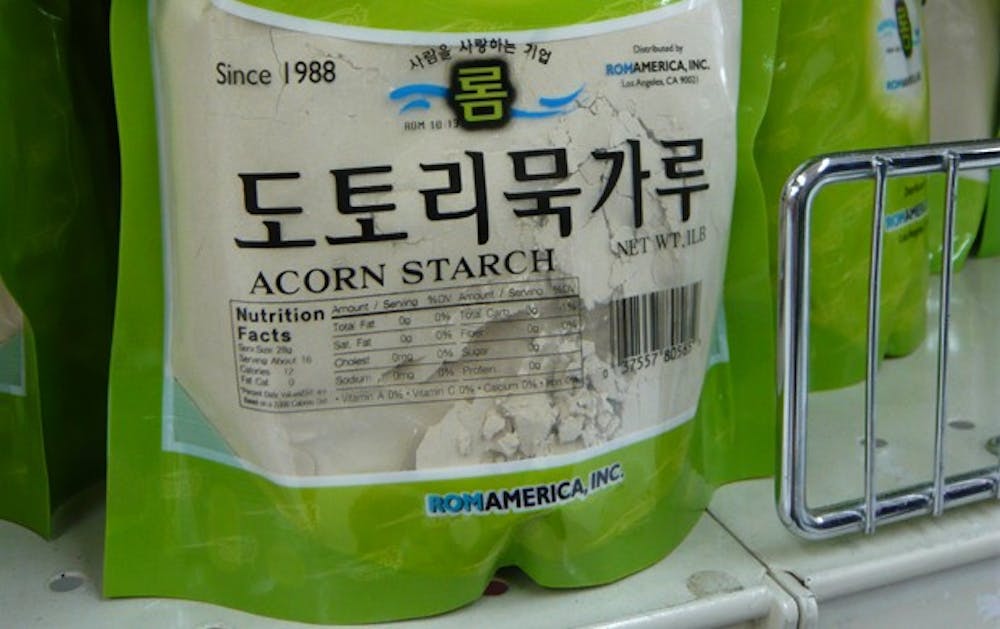Lee Lee Oriental Supermarket, a 15-year-old Chandler grocery just 20 minutes away from ASU's Tempe campus, is a unique commodity to the Valley, offering products with exotic tastes, smells and textures. The market specializes in providing the ingredients needed to make authentic dishes from around the world, while also selling cooking utensils, table settings and even jewelry.
The beauty of Lee Lee's is that it combines the best of the old and the new world. Lee Lee’s is like a Costco in its inventory and a mom-and-pop shop in its specialization. Whether the shopper is a “gringo” wanting to experiment with a new recipe or an Asian immigrant looking for back-home ingredients, Lee Lee’s is sure to please. SPM took a trip to the anomalous grocery and found 10 strange items you (probably) won't see anywhere else. Jumbo Squid Location: On the back wall, in the clear case by the live fish and shellfish. Description: Real jumbo squid run about 10 to 100 pounds and are used mainly for commercial calamari steaks. The home chef can tackle a two- to three-pound squid rather easily, if following the correct cleaning and cutting techniques. The squid at Lee Lee’s are already cleaned and prepared for cooking.
“Sammi Silkworm” Silkworm Chrysalis Location: Aisle 16 Description: Yes, canned silkworms. At first glance, the inexperienced shopper might think they were for human consumption, but they are actually for feeding birds or koi fish. The worms are also good bait for pigs, bullfrogs, ducks and chickens.
Acorn Starch Location: Aisle 16 Description: This starch, used widely in Korean cooking as more of a flour than as a thickener, is made by grinding acorns into a fine, orange paste, soaking the paste in water and then running the liquid through a sieve. Acorns contain tannins and other polyphenols which prevent the human body from digesting properly, so the soaking and sieving steps are highly important.
Dotorimuk is a jelly made from Acorn Starch that was widely eaten in Korea during the Korean War when millions went starving. After that it became closely associated with poverty, but recently has been claimed to be a health food.
52 Quart Pot Location: Aisle 12 Description: It’s a huge pot! The epic proportions are almost cartoonish.
Dehydrated Fungus Location: Aisle 9 Description: While the name holds shock value for most Westerners, dehydrated fungus isn’t any scarier than a mushroom. Reconstitute the fungus in water and it is ready for use.
Cooked Salted Duck Eggs Location: Aisle 9 Description: These duck eggs are preserved in a brine solution to raise their shelf life to six months. Preserved eggs are an important part of the Asian diet, used as both a seasoning and a snack. The yolk in the salted egg is representative of the full moon in Chinese New Year traditions and is often included in Chinese pastries, paired with a red bean paste to downplay the yolk’s saltiness with sweetness.
Peruvian Super Seasoning Location: Aisle 8 Description: This item is 99 percent Monosodium glutamate (MSG), a flavor-enhancing food additive that is used in Chinese food, canned vegetables, soups and processed meats. The FDA classifies it as “generally recognized to be safe,” but MSG has brought about enough side effects to become controversial. As a result, it is common to see signs proclaiming “No MSG” at restaurants or on food labels.
St. Michael’s Fried Pig Ears Location: Aisle 7 Description: Similar to pork rinds... but ears instead. Can you get over the body part in question and enjoy the crunchy, salty flavor loved by many?
Agar Agar Snack Location: Aisle 7 Description: Agar Agar is a thickening agent with many applications. It can be found it gel form or a dried, crunchy form. In this aisle there are bags with long red, yellow, or clear translucent and elongated cubes of dried Agar Agar that look like they would have the consistency of an aerated, dried marshmallow.
Grass Jelly Location: Aisle 6 Description: A translucent black color, this item is a dessert commonly found in Taiwan, China, Hong Kong and Southeast Asia. It is made by boiling the stems and leaves of Mesona chinensis, a member of the mint family, with starch and potassium carbonate. It is said to have cooling effects, so it is popular during the summer months. After it firms up, the jelly is cut into squares and either mixed with syrup or with coconut milk.
If you go:
2025 N. Dobson Road, Chandler 480-899-2887
7575 W. Cactus Road, Peoria 623-773-3345
Open 9 a.m. to 9 p.m. daily leeleesupermarket.com
Reach the reporter at dkmcinty@asu.edu









